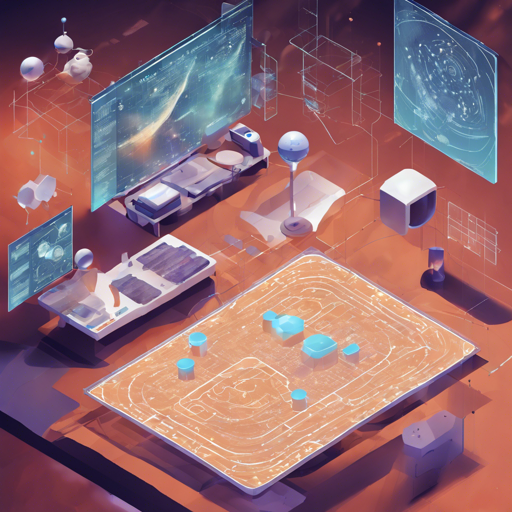With the rapidly evolving world of AI, articulating complex relationships in visuals has become increasingly vital. One such innovative solution is **SpaceFlorence-2**, a powerful vision-language model that enhances spatial reasoning abilities. If you’re looking to leverage this remarkable tool, you’re in the right place. In this guide, we’ll walk you through the setup and execution of SpaceFlorence-2, highlighted by troubleshooting tips to ensure a seamless experience.
What is SpaceFlorence-2?
SpaceFlorence-2 is built on the foundations of the BERT component within the Florence-2 architecture and is finely tuned using the SpaceLLaVA dataset, specifically designed for spatial reasoning tasks, drawing inspiration from SpatialVLM.
Getting Started with SpaceFlorence-2
To use SpaceFlorence-2, follow the steps outlined below:
- Ensure you have Python and the required libraries installed.
- Set up your coding environment (Google Colab is a great option).
- Run the following Python code to initiate the model:
python
import requests
import torch
from PIL import Image
from transformers import AutoProcessor, AutoModelForCausalLM
device = 'cuda:0' if torch.cuda.is_available() else 'cpu'
torch_dtype = torch.float16 if torch.cuda.is_available() else torch.float32
model = AutoModelForCausalLM.from_pretrained('remyxai/SpaceFlorence-2', trust_remote_code=True).to(device)
processor = AutoProcessor.from_pretrained('remyxai/SpaceFlorence-2', trust_remote_code=True)
prompt = "SpatialVQA: How far between the person and the pallet of boxes?"
url = "https://remyx.ai/assets/spatialvlm/warehouse_rgb.jpg?download=true"
image = Image.open(requests.get(url, stream=True).raw)
inputs = processor(text=prompt, images=image, return_tensors='pt').to(device, torch_dtype)
generated_ids = model.generate(
input_ids=inputs['input_ids'],
pixel_values=inputs['pixel_values'],
max_new_tokens=1024,
num_beams=3,
do_sample=False
)
generated_text = processor.batch_decode(generated_ids, skip_special_tokens=False)[0]
parsed_answer = processor.post_process_generation(generated_text, task="SpatialVQA", image_size=(image.width, image.height))
print(parsed_answer)
Explaining the Code Analogy
Think of setting up SpaceFlorence-2 as preparing a new dish in a kitchen:
- Ingredients: The relevant libraries are like the ingredients required for your recipe. Just like you wouldn’t start cooking without all your ingredients, you need libraries like `torch`, `requests`, and `PIL` to start.
- Cooking Instructions: The code that initializes the model and processes input is akin to following a recipe step-by-step to make your dish. Each command is a specific step that brings you closer to the final meal.
- Final Touch: Just as you might garnish a dish before serving, the `print(parsed_answer)` is your final presentation step, displaying the output from SpaceFlorence-2 to the user.
Troubleshooting Common Issues
- Issue 1: If you receive an error related to the model not being found, ensure that you’ve spelled the model name correctly in the `from_pretrained` method.
- Issue 2: For device-related errors, ensure your CUDA drivers are installed and configured correctly if you are using a GPU. Otherwise, switch to CPU mode.
- Issue 3: If your images don’t load, check the provided URL to ensure it is valid and accessible.
For more insights, updates, or to collaborate on AI development projects, stay connected with fxis.ai.
Conclusion
Using SpaceFlorence-2 opens exciting avenues for combining vision and language in sophisticated ways. By following this guide, you should be well on your way to exploring the capabilities of spatial reasoning with this multimodal model.
At fxis.ai, we believe that such advancements are crucial for the future of AI, as they enable more comprehensive and effective solutions. Our team is continually exploring new methodologies to push the envelope in artificial intelligence, ensuring that our clients benefit from the latest technological innovations.

